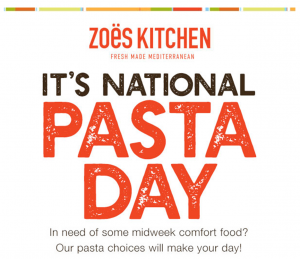At 8pm Eastern on Tuesday October 16, the Celtics and 76ers tipped off the NBA 2018-2019 season. About an hour into the game I received an email from Starbucks with “double double” in the subject line. I usually delete promotional emails, but Starbucks and professional basketball don’t usually mix, so it piqued my interest.
The email was promoting Starbucks’s Double-Star Day (10/17) to its rewards members. The 17th is also when the remaining NBA teams started play. Coincidence? Unlikely.
Starbucks’s email highlights two important marketing trends:
- Relevance – Professional basketball fans aren’t typically associated with being coffee aficionados, but they probably do drink it. This was an opportunity for Starbucks to couple itself with a brand (the NBA) and event (the start of basketball season) that it wouldn’t normally be associated with.
- Personalization – I’m a member of Starbucks’s loyalty program, which is why I received the email. However, it was also customized with my balance of Stars (their version of points) and how exactly the promotion would benefit me.
It’s wise for brands to take advantage of what’s happening in the world, particularly if the event will be a source of conversation online and in the media. Those efforts can be made even stronger through personalization. Being mindful of, and planning for, these types of activities can ensure your brand is capitalizing on the right opportunities with the right audience segment(s). It’s quite possible that I received a targeted subject line based on other data and information that Starbucks has on me. Others could have received a totally different subject line and email entirely.
For brands that want to make the most of these opportunities, here are a few things to consider:
- Look for opportunities to relate your brand to a new consumer (e.g., basketball and coffee fans aren’t typically thought of together). This could create relationships that didn’t previously exist.
- Look for opportunities to reintroduce your brand to a less-active consumer. A lot of basketball fans probably do drink coffee, and the campaign could’ve (re-)positioned Starbucks as a preferred alternative, or at least made them think twice about where they bought their coffee the next day.
- Find ways to connect seemingly unconnected things. Wednesday the 17th was also National Pasta Day (your mind probably goes to Olive Garden, and rightfully so). However, Zoe’s Kitchen made themselves known with a campaign promoting their pastas.

- Find ways to make it personal. Starbucks used customer data it already possessed. You may choose to narrow down the channels that are most personal to your audience. Either way, if you want today’s consumers to engage, they need to feel like you’re speaking directly to them.
These opportunities don’t have to be massive campaigns. They can be simple, like Wendy’s recent #FreshFanReaction content targeted towards college football fans.
Might need a Scott Frosty to ice down the beating Nebraska is taking.#FreshFanReaction
— Wendy’s (@Wendys) September 22, 2018
Oh look. Bama is gonna win….again. *dips fry in frosty* #FreshFanReaction
— Wendy’s (@Wendys) October 6, 2018
If you aren’t looking for opportunities to plug your brand into larger conversations, you should start. Whether it’s a company-wide campaign or a single post, rewarding opportunities exist for those who are willing to look. The jury is still out on the sales lift Starbucks, Zoe’s and Wendy’s will see; but if I had to guess, I’d say it will be noteworthy.
